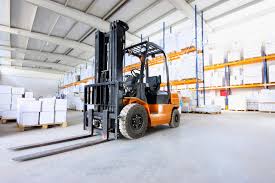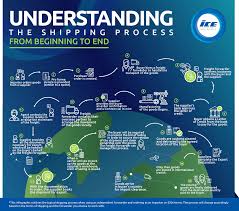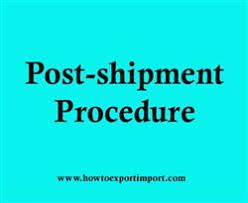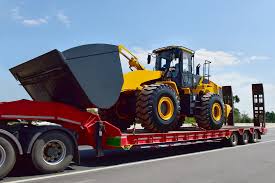The Post-Shipment Phase of Machinery: Understanding and Managing Aftermarket Operations 
The post-shipment phase of machinery encompasses all activities that occur after a piece of equipment has been delivered to its final destination. This phase is critical in ensuring that machinery operates effectively and efficiently, meets customer expectations, and contributes to the long-term success of the manufacturer. It involves a series of processes including installation, commissioning, training, maintenance, support, and lifecycle management. This essay will explore each aspect of the post-shipment phase in detail, discussing its significance, best practices, challenges, and the role of technology in enhancing aftermarket operations.
- Overview of the Post-Shipment Phase
The post-shipment phase begins the moment the machinery leaves the shipping dock and arrives at the customer’s facility. This phase is often seen as a transition from the sales process to customer service and support, and it can significantly impact customer satisfaction, equipment performance, and the manufacturer’s reputation.
Key Objectives
The primary objectives of the post-shipment phase include:
- Successful Installation: Ensuring that the machinery is installed correctly and is fully operational.
- Commissioning: Testing the equipment to confirm it meets performance specifications and operational standards.
- User Training: Providing training to end-users to maximize equipment utilization and efficiency.
- Ongoing Support: Establishing a support framework for troubleshooting, maintenance, and repairs.
- Lifecycle Management: Planning for the machinery’s long-term operation, including upgrades, maintenance schedules, and end-of-life considerations.
- Installation and Commissioning
2.1 Installation
Installation involves setting up the machinery according to manufacturer specifications. This process can vary significantly depending on the complexity of the equipment and the environment in which it is installed. Key steps include:
- Site Preparation: Before installation, it’s crucial to prepare the site, ensuring that the necessary infrastructure (like electrical, water, and air supplies) is in place.
- Physical Installation: This includes uncrating the machinery, moving it into position, and securing it to its foundation.
- Alignment and Calibration: Proper alignment is essential for machinery that requires precision operation. Calibration ensures that the machine operates within its specified parameters.
2.2 Commissioning
Commissioning is a critical step that verifies the machine’s operational readiness. It typically involves:
- Initial Testing: Running the machinery to ensure it operates correctly under load conditions.
- Performance Verification: Comparing operational data against specifications to confirm that performance standards are met.
- Final Adjustments: Making necessary adjustments based on initial testing results to optimize performance.
- Training
Training is a vital component of the post-shipment phase. Proper training ensures that operators are equipped to use the machinery effectively, thereby enhancing productivity and reducing the risk of accidents.
3.1 Training Programs
Effective training programs should include:
- Operational Training: Hands-on sessions focusing on daily operations, safety protocols, and best practices.
- Maintenance Training: Instruction on routine maintenance tasks that operators can perform to keep the machinery running smoothly.
- Troubleshooting Techniques: Equipping operators with skills to diagnose and solve common issues without external support.
3.2 Training Delivery Methods
Training can be delivered through various methods, including:
- On-Site Training: Direct instruction at the customer’s location, allowing for personalized guidance and real-time interaction.
- Webinars and Online Courses: Flexible training options that can be accessed remotely, providing resources for ongoing learning.
- Training Manuals and Videos: Comprehensive documentation and visual aids that can serve as reference materials for operators.
- Ongoing Support
After installation and training, ongoing support becomes crucial to maintain machinery performance and ensure customer satisfaction.
4.1 Technical Support
Establishing a robust technical support system is essential. This can include:
- Hotline Support: Providing a dedicated phone line for immediate assistance with operational or technical questions.
- Remote Diagnostics: Utilizing technology to remotely monitor machinery performance and diagnose issues before they escalate.
4.2 Maintenance Services
Regular maintenance is vital for extending the life of machinery and preventing unexpected breakdowns. Strategies for effective maintenance include:
- Scheduled Maintenance: Developing a maintenance schedule based on the manufacturer’s recommendations and the machine’s usage patterns.
- Predictive Maintenance: Implementing advanced analytics and IoT technology to predict when maintenance is needed based on machine data, minimizing downtime.
4.3 Spare Parts Management
Managing spare parts availability is critical to ensuring that machinery can be repaired quickly when issues arise. Strategies include:
- Inventory Management: Keeping an inventory of commonly used spare parts on-site to facilitate rapid repairs.
- Supplier Relationships: Establishing strong relationships with parts suppliers to ensure timely access to critical components.
- Lifecycle Management
Lifecycle management involves planning for the entire lifespan of the machinery, from installation through to decommissioning.
5.1 Asset Tracking
Implementing systems to track machinery usage and performance data throughout its lifecycle is crucial. This can include:
- Data Collection: Utilizing IoT sensors to gather operational data that informs maintenance schedules and performance assessments.
- Performance Metrics: Analyzing data to evaluate efficiency, identify trends, and inform future purchasing decisions.
5.2 Upgrades and Modifications
As technology evolves, upgrading machinery may be necessary to maintain competitiveness. This can include:
- Software Updates: Regularly updating software systems to improve functionality and security.
- Hardware Modifications: Retrofitting older machines with new technology to enhance performance and efficiency.
5.3 End-of-Life Planning
Planning for the end of a machine’s life is essential to minimize environmental impact and recover value. This includes:
- Decommissioning Processes: Establishing protocols for safely removing and disposing of machinery.
- Recycling and Reuse: Finding ways to recycle components or repurpose machinery for other uses.
- Challenges in the Post-Shipment Phase
Despite the critical importance of the post-shipment phase, several challenges can arise:
6.1 Communication Gaps
Effective communication between manufacturers and customers is crucial for ensuring successful installation, training, and ongoing support. Misunderstandings can lead to operational issues and customer dissatisfaction.
6.2 Technological Adaptation
As machinery becomes more advanced, the complexity of operating and maintaining it increases. Both operators and support staff must continuously adapt to new technologies, which can be challenging.
6.3 Resource Constraints
In some cases, manufacturers may face constraints in resources, including personnel and budget, limiting their ability to provide comprehensive support and training.
6.4 Customer Expectations
Customers today expect high levels of service and support. Failing to meet these expectations can lead to dissatisfaction and harm the manufacturer’s reputation.
- The Role of Technology in Enhancing Post-Shipment Operations
7.1 Digital Tools and Platforms
The integration of digital tools can significantly enhance the efficiency and effectiveness of post-shipment operations.
- Customer Relationship Management (CRM) Systems: These systems can track customer interactions, manage support requests, and ensure timely follow-up.
- Service Management Software: Tools that facilitate scheduling, dispatching, and tracking of service technicians can improve response times and service quality.
7.2 IoT and Data Analytics
The Internet of Things (IoT) and data analytics play a transformative role in post-shipment operations.
- Real-Time Monitoring: IoT sensors can provide real-time data on machinery performance, enabling proactive maintenance and timely interventions.
- Predictive Analytics: Analyzing historical data can help predict failures and maintenance needs, optimizing operational efficiency.
7.3 E-Learning and Training Platforms
Digital learning platforms offer flexible training options for operators and maintenance personnel.
- Interactive Learning Modules: Online modules that incorporate videos, quizzes, and simulations can enhance learning and retention.
- Virtual Reality (VR) Training: VR technology can provide immersive training experiences, allowing operators to practice skills in a safe, controlled environment.
- Conclusion

The post-shipment phase of machinery is a critical aspect of the machinery lifecycle that influences customer satisfaction, equipment performance, and the long-term success of manufacturers. Through effective installation, comprehensive training, ongoing support, and proactive lifecycle management, companies can ensure that their machinery operates efficiently and meets customer needs.
As technology continues to advance, manufacturers must embrace digital tools, IoT, and data analytics to enhance their post-shipment operations. By overcoming challenges and leveraging technology, companies can improve their service offerings, foster strong customer relationships, and ultimately achieve greater success in an increasingly competitive marketplace. The focus on the post-shipment phase is not just about the machinery itself, but about creating value for customers and ensuring that their investments lead to sustainable performance and growth.

